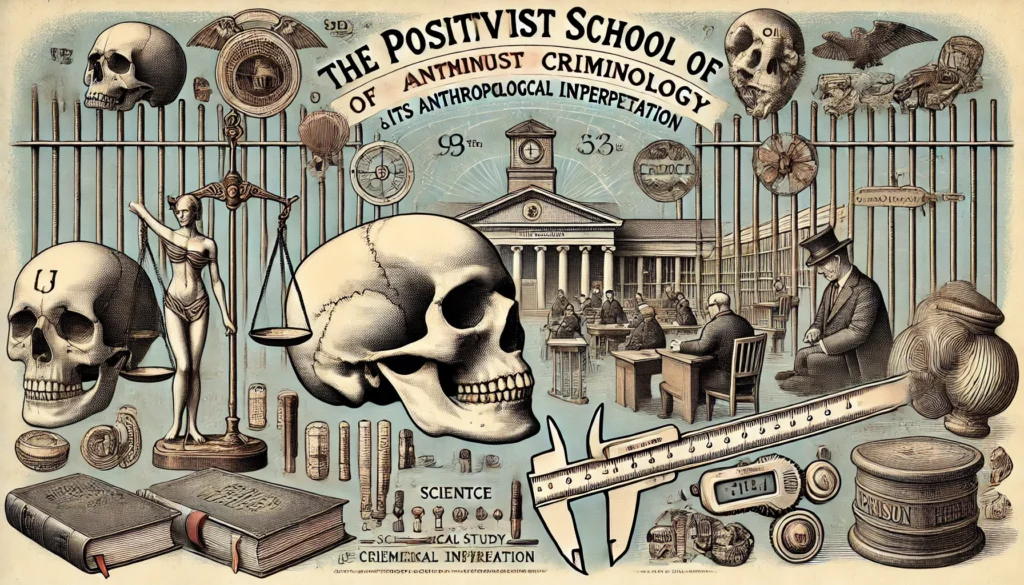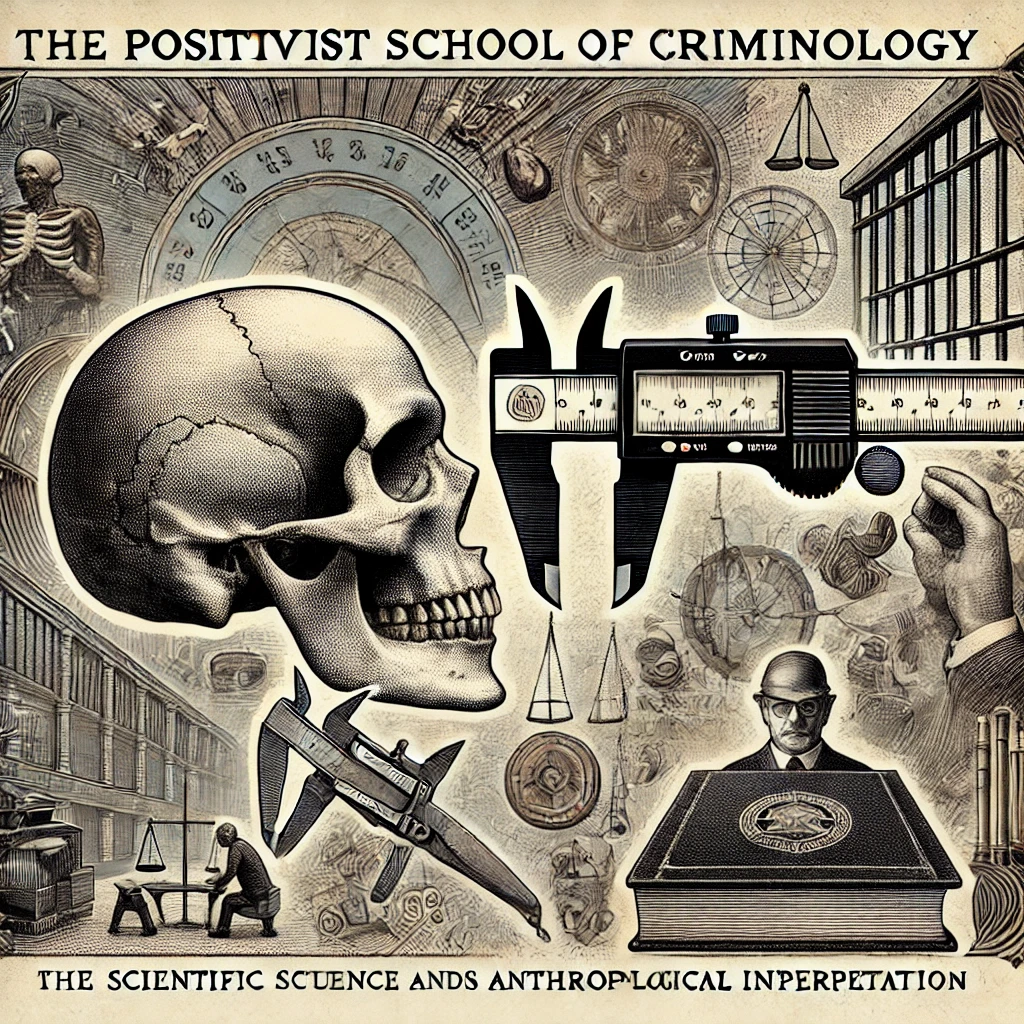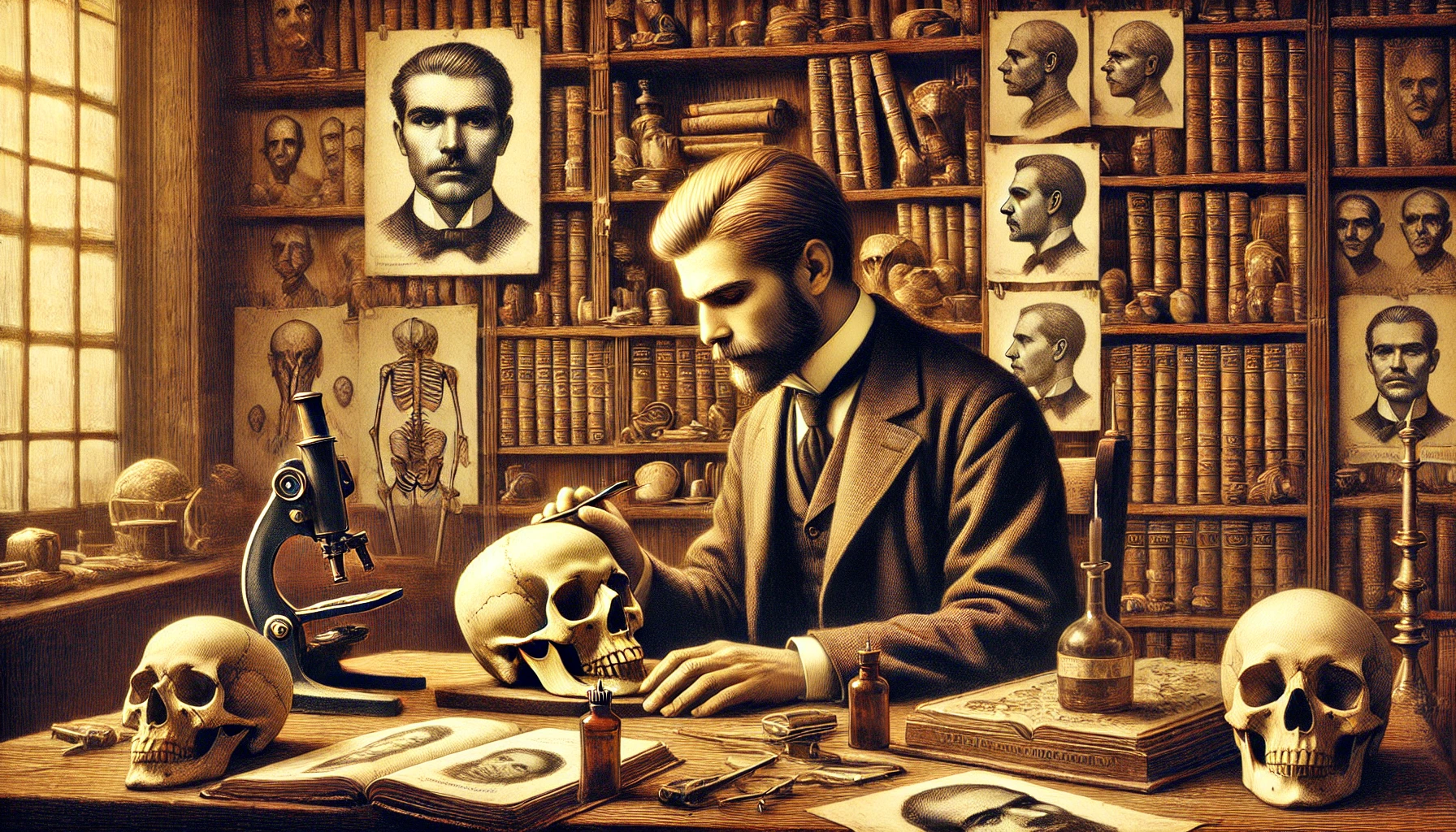Introduction
The emergence of the Positivist School marked a revolutionary phase in criminology, steering the discipline towards a more scientific approach to understanding criminal behavior. By focusing on empirical evidence, the Positivist School challenged earlier philosophical and moralistic interpretations of crime, offering a framework rooted in observable and measurable phenomena. Central to this movement was the anthropological interpretation, which delved into the biological and physical characteristics of individuals to explain criminal tendencies. This article explores the development of the Positivist School, its key principles, and the anthropological theories that shaped its understanding of criminal behavior.
The Foundations of the Positivist School
The Shift from Classical to Positivist Thought
Before the advent of positivism, criminology was dominated by the Classical School, which emphasized free will, rationality, and the role of punishment as a deterrent. However, this approach faced criticism for its inability to account for the complex and diverse factors influencing criminal behavior. The Positivist School emerged in the 19th century as a response, advocating for a scientific study of crime that considered biological, psychological, and sociological factors.
Key Principles of Positivism
- Determinism: Positivists argued that human behavior is determined by factors beyond individual control, such as genetics, environment, and social influences.
- Empiricism: The reliance on observable and measurable data was central to the Positivist School, distinguishing it from earlier speculative approaches.
- Focus on the Individual: Positivism shifted the focus from the crime itself to the criminal, seeking to identify the underlying causes of criminal behavior.
- Prevention Over Punishment: Unlike the Classical School, which emphasized retributive justice, the Positivist School prioritized rehabilitation and prevention based on the scientific understanding of criminality.
The Role of Anthropological Interpretation
Anthropological interpretation played a pivotal role in the development of positivist criminology. This perspective sought to explain criminal behavior through the study of human physical and biological traits. Pioneers of this approach believed that certain anatomical and physiological characteristics were linked to criminal tendencies.
Cesare Lombroso: The Father of Anthropological Criminology
Cesare Lombroso, an Italian physician and criminologist, was the most influential figure in the anthropological interpretation of crime. His groundbreaking work, L’Uomo Delinquente (“The Criminal Man”), laid the foundation for biological positivism. Lombroso proposed the concept of the “born criminal,” suggesting that certain individuals were predisposed to criminal behavior due to inherited traits.
Key Ideas of Lombroso:
- Atavism: Lombroso argued that criminals were evolutionary throwbacks, exhibiting primitive physical traits that made them predisposed to deviant behavior.
- Physical Indicators: He identified features such as asymmetrical facial structures, long arms, and prominent jaws as markers of criminality.
- Typologies of Criminals: Lombroso classified criminals into categories, including born criminals, insane criminals, and occasional criminals, based on their biological and psychological characteristics.

The Legacy and Criticism of Lombroso’s Theories
While Lombroso’s ideas were revolutionary, they were not without controversy. Critics argued that his theories were overly deterministic, disregarding the influence of environmental and social factors. Additionally, the reliance on physical traits to identify criminals raised ethical concerns and contributed to the stigmatization of certain groups.
Broader Anthropological Perspectives
Beyond Lombroso, other scholars expanded the anthropological interpretation of crime, integrating new methodologies and perspectives.
Enrico Ferri: Multifactorial Analysis
Enrico Ferri, a student of Lombroso, broadened the scope of positivist criminology by emphasizing the interplay of biological, social, and psychological factors. He argued that criminal behavior could not be attributed to a single cause but resulted from a combination of influences.
Key Contributions of Ferri:
- Advocated for preventive measures, including social reforms and education, to address the root causes of crime.
- Proposed the concept of “social defense,” focusing on protecting society from criminal behavior through scientific interventions.
Raffaele Garofalo: Natural Crime
Raffaele Garofalo, another prominent figure in the Positivist School, introduced the concept of “natural crime.” He believed that criminal acts violated basic human sentiments, such as pity and probity, which were essential for social cohesion.
Key Contributions of Garofalo:
- Emphasized the importance of moral and social norms in understanding crime.
- Advocated for proportional punishment based on the “dangerousness” of the offender.

The Impact of the Anthropological Interpretation
Advances in Criminal Profiling
The anthropological approach laid the groundwork for modern criminal profiling, offering insights into the relationship between individual characteristics and criminal behavior. By studying physical and psychological traits, criminologists developed methods for identifying potential offenders and understanding their motivations.
Influence on Forensic Science
Anthropological criminology also contributed to the development of forensic science. Techniques such as fingerprint analysis, facial reconstruction, and the study of skeletal remains owe their origins to the early emphasis on physical evidence.
Ethical and Social Implications
Despite its contributions, the anthropological interpretation raised ethical concerns, particularly regarding its potential for misuse. The emphasis on biological determinism risked perpetuating stereotypes and justifying discriminatory practices. Modern criminologists have sought to address these issues by integrating anthropological insights with a broader understanding of social and environmental factors.
Conclusion
The Positivist School and its anthropological interpretation revolutionized criminology by introducing a scientific approach to the study of crime. Figures like Cesare Lombroso, Enrico Ferri, and Raffaele Garofalo laid the foundation for understanding criminal behavior through empirical evidence and interdisciplinary perspectives. While their theories faced criticism, their contributions remain integral to the evolution of criminology. Today, the legacy of the Positivist School continues to influence the field, inspiring ongoing research into the complex interplay of biological, psychological, and social factors in shaping criminal behavior.

